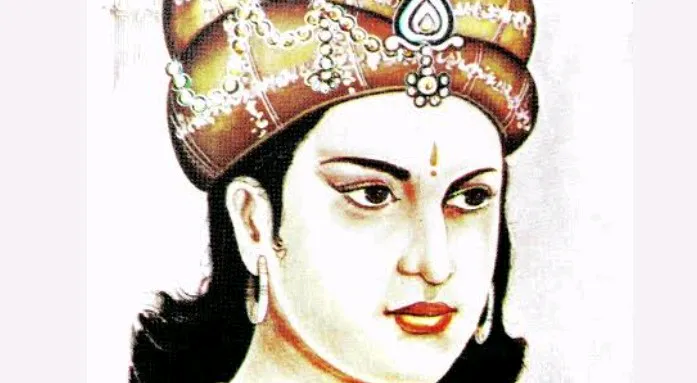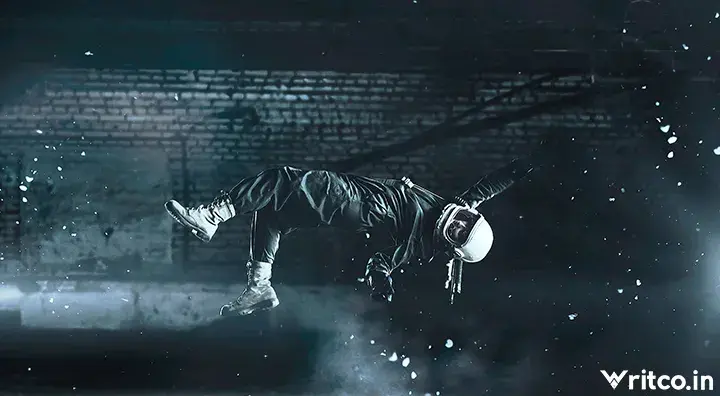Why the man who inspired the Bharat (Indian) republic is still worth reading.
We all know that the Indian constitutional emblem was inspired by the artifact patronized by the great Mauryan king of the Indian sub-continent (Akhand Bharat), popularly known as Chakravarti Samrat Ashok. This shows the importance of the influence the Sarnath pillar located near Varanasi, dated to around 250 BCE, had on the Indian leaders who were responsible for framing and producing the constitution. On the contrary, one can also find the Ashok chakra not only on the Indian national flag but also on national wealth like currency notes, Indian passports, and stationery used by the government.
Flashback
The story starts with a child who is known to have been born in 375 B.C. and is popularly known as Vishnu Gupta, Chanakya, or Kautilya. His origin or birthplace is still under debate. Some say that he came from the Golla village (south India), some say that he came from Taxila (modern-day Pakistan), and some say that he was born in Pataliputra itself (modern-day Patna, Bihar, India).
According to Thomas Trautmann, there are four versions of the story that laid the foundation of the Mauryan empire, eradicating the unworthy Nanda empire.
A. Mahavamsa (Buddhist version recorded in Pali).
B. Perishishtaparvan by Hemchandra. (Jain version).
C. Katha Sarit Sagar by Som Deva, Brihat-Katha-Manjari by Ksemendra. (Kashmiri Version).
D. Mudra Rakshasa by Vishakha Datta (Sanskrit version).
It’s clear that exact records and substance related to it must have been erased due to destruction that came with invasions, but the story remained the same in all versions. All credit goes to the endless oral educational culture that this land practiced in the form of stories, poems, and literature that reflects that a man existed 2300 years ago who not only talked but also played a crucial role in drafting and executing the seven principled blueprints that were very much in line with the democratic structure of today. This states the level of statesmanship that this land was able to produce, which, according to these seven principles, got unified under one tower of power but was also seen to be decentralized in administrative ways.
The revolutionary idea that the best way to manage any sovereign boundary should be through the science of politics, which includes the rule of formulated law for the respective land, which took the name of Artha Shastra, can be seen as the first version of the modern constitution, which was seen to be out of question worldwide. It was he who first stated that if a state has to be governed, then it can only be governed by the rule of law and not by the rule of faith or beliefs, considering exceptions and keeping some sensitivities aside. Thus, it was clear that he was the first person who vouched for the separation of religious and state affairs.
The seven principles of Chanakya that go well with modern-day democratically governed regions are:
1. Swami or King: Prime Minister or President in modern terms. He is known to be the top head of all the executive powers, yet he takes decisions based on the suggestions of the people and the enlightened visionaries in his cabinet. This shows his accountability towards the people, or the citizens of the state. The underlying factor always remains the welfare of all.
2. Amatya (the minister or the top manager of the state). He makes sure that all the peripherals of the governing organization function at their best. It’s all about enhancing governance with the least friction to be faced.
3. Jana Pada market for all the districts of the state responsible for revenue and cash flow through trade and business. Creating the ambience for ease of business while maintaining a reasonable monopoly over the segment shows the strength of the veins of the overall body.
4. Durga (the fortified city). It’s the head office where all the strategies and policies for the future come into play. It can be a vague representation of the parliament in modern terms.
5. Kosha (treasury). Managing finance shows the strength of the backbone of any organization. It makes you self-reliant in terms of taking free and independent decisions.
6. Dand (the Army or all the people who dedicate their lives to the public sector so that vigilance remains under check are seen as the guardians of the state).
7. Mitra (the Ally, or friendly state, who not only consults you but also protects you from the opposition Ally).
After seeing the incapability and the evil intention of Dhana Nanda, he (Chanakya) vowed to dethrone Dhana Nanda by replacing it with the new administrative power that came from the ground root. In his expedition, he found a unique boy showcasing his administrative skills with his childhood friends that showed his soul was spirited to his motherland. This boy later came to be known as the founder of the Mauryan empire, commonly known as Chandragupta Maurya. His childhood background is pretty vague, and thus not much information is available about where he came from except the fact that he belonged to the community of people doing menial jobs when the eyes of Chanakya set on him. Chanakya, being a visionary at first glance, knew that the boy could be a diamond if harnessed with the needed context, so after buying him from the community, he took him straight to Taxila, the ancient hub of top-class international education.
The main aim was to establish the PAN-BHARAT rule so that things like malpractices and foreign invasions could be restrained. Many people say that Alexander’s rise was the reason behind such a thought. Keeping the Greek account aside, there is no Indian record that Alexander invaded the Subcontinent and had a fight with King Porus. Suppose we consider Alexander’s story to be true. Even then, it’s hard to digest that Alexander, who is known to be an ambitious conqueror, returned, leaving the most fertile land on the planet Earth. It’s clear that it was Greece’s narrative that captured the top layer of the world’s narrative and wrote their story for upholding dominance.
Q. Why is there no account that Chanakya, who was a reasonable figure in Taxila plus and was a hard-core nationalist, didn’t take the pain to meet Ambhi, who was known to be the king of Takshashila, or Porus, who is said to be the king of Punjab province, when Alexander was on the verge of invading Bharat?
Q. Why didn't the Maurya dynasty mention any records of Chandragupta's conquest of Punjab when Porus too is remembered to be a nationalist?
Q. If the Nanda dynasty happened to be one of the strongest dynasties of its time, then why did Alexander, who is known to be the so-called great conqueror, not take the pain to attack Magadh after he invaded Punjab province?
Like these, there can be a lot of questions that doubt the so-called Greek records.
Coming back to Magadh, Chanakya, who is known to be Bharat’s sustainable strategist, taught Chandragupta all the possible ways that were needed to uphold the overall righteousness restricted to Bharat’s prosperity. Thus, using the present lens to judge him won’t be fair to his doings, and thus we have to rise above the so-called right and wrong to understand the ethos behind the science of governance crafted and executed by him.
Even after applying all the strategies to protect the sovereignty, there came a situation where, after defeating Nicator for the protection of the north-west region, Chandragupta had to ally with Seleucus Nicator after sensing the potential threat. Thus, this transaction proceeded by marrying Nicator’s daughter, whose name is unclear in the Indian accounts. Chanakya foreseeing the future allowed this marriage to take place by receiving an assurance that a child born through this marriage will not become an heir to the throne. This kootniti led to the clearance of Durdhara’s heir, who is known to be Dhana Nanda’s sister.
There are many indications that state that the two incidents of Nicator’s defeat and the fact that the child born through this marriage cannot become an heir led to the cold war between Nicator and Chandragupta that led to many conspiracies in the future. This ally went on to form another ally with Mir Khorasan when Chandragupta and Durdhara’s son Bindusara became king. Here too, Bindusara had to marry Noor, who is known to be Mir Khorasan’s daughter. This eventually led to a temporary alliance among the Khorasan’s and the Nicator’s daughters when Ashoka not only came from nowhere but also became a potential threat to the throne.
We all know that there came a point when Ashoka turned into a cruel entity, but very few take the pain to understand the reason behind it and only take pleasure in painting him the color of blood. Digging into Ashoka’s childhood days, one thing was clear: in spite of being a hot-headed boy, his soul was found to be spirited for the land on which he was born. This quality of being a transparent and straight-forward guy turned into a weakness when seen through a social lens. In spite of being protected by Chanakya Ashoka, he many times became the victim of various conspiracies. From Charu Mitra to Shushim to Noor to Mir Khorasan to Nicator, suspects were many. Experiencing the conspiracies, including the wisdom of Chanakya, taught Ashoka a lot. Situations that made Ashoka learn such lessons definitely made him smart and tough, but still, that innocence remained, and this many times became the reason for his volatile reactions.
According to some sources, Ashoka’s mother and Chanakya conspired to die, and somehow Bindusara was manipulated to make Shushim the king. This made Ashoka violate the laws and rules of the land, and he made sure that he became the king.
Lord Krishna once said that to establish Dharma or righteousness, if you come across adverse A-dharmic situations or people, then doing A-dharma will also be considered Dharma. Later, due to the vacuum of guidance and wisdom, Ashoka became cruel and insensitive, but deep down he was pure, and so further he explored the path to the ultimate Dharma of Mukti and Moksha. Of course, some acts of his cannot be justified, and for that period we call him Chand Ashok, but later also came a period of his realization, and if we have to realize that it cannot happen without the blessings of the devas, he is also known as Devanampriya Priyadarshi.
After Ashok, the vision of having a Chakravarti Samrat weakened and later faded. This vacuum in the vision became the reason for all the invasions that took place. This scatteredness and not being unified turned out to be a huge blunder. In spite of many wars, eventually a point came where they lost battles against a clan that neither believed nor respected any rules. To come to this understanding, it took a long time, and by then, the barbaric invaders had a reasonable hold of the land.
Lessons that can be learned:
1. If one faces opposition who believes in no rules, they have to be given back in the same manner.
2. Once a barbaric is defeated, it’s become even more important to kill him and his network and not commit the mistake of sparing him, as was done by Prithviraj Chauhan.
3. Before the opposition enters your territory, you have to make his people understand the ethics of the dharma and, if not handled in the appropriate context, how it can affect prosperity in the future. This can lead to internal conflict and undo the crisis that was on the verge of unfolding.
4. Take regular initiatives to strengthen the territory, not only by making the borders safe but also by making friendly allies’s so that help can be received in adverse situations. Trade carried out with strict vigilance will strengthen the economy, adhering to mutual interests.
5. Keeping a vigilant eye on the source of the internal conflict is very important because most wars are lost only when the doors are opened from inside.
There can be many more lessons, and so talking and writing without executing will serve no purpose. Remember, real revolutions don’t happen with laws or policies; they happen only when evolution happens in one’s consciousness, and it takes time.
- Atul Tyagi
© Solutions in terms of clarity for life.
@writco #history #samratashok #akhandbharat #india #chanakya
Flashback
The story starts with a child who is known to have been born in 375 B.C. and is popularly known as Vishnu Gupta, Chanakya, or Kautilya. His origin or birthplace is still under debate. Some say that he came from the Golla village (south India), some say that he came from Taxila (modern-day Pakistan), and some say that he was born in Pataliputra itself (modern-day Patna, Bihar, India).
According to Thomas Trautmann, there are four versions of the story that laid the foundation of the Mauryan empire, eradicating the unworthy Nanda empire.
A. Mahavamsa (Buddhist version recorded in Pali).
B. Perishishtaparvan by Hemchandra. (Jain version).
C. Katha Sarit Sagar by Som Deva, Brihat-Katha-Manjari by Ksemendra. (Kashmiri Version).
D. Mudra Rakshasa by Vishakha Datta (Sanskrit version).
It’s clear that exact records and substance related to it must have been erased due to destruction that came with invasions, but the story remained the same in all versions. All credit goes to the endless oral educational culture that this land practiced in the form of stories, poems, and literature that reflects that a man existed 2300 years ago who not only talked but also played a crucial role in drafting and executing the seven principled blueprints that were very much in line with the democratic structure of today. This states the level of statesmanship that this land was able to produce, which, according to these seven principles, got unified under one tower of power but was also seen to be decentralized in administrative ways.
The revolutionary idea that the best way to manage any sovereign boundary should be through the science of politics, which includes the rule of formulated law for the respective land, which took the name of Artha Shastra, can be seen as the first version of the modern constitution, which was seen to be out of question worldwide. It was he who first stated that if a state has to be governed, then it can only be governed by the rule of law and not by the rule of faith or beliefs, considering exceptions and keeping some sensitivities aside. Thus, it was clear that he was the first person who vouched for the separation of religious and state affairs.
The seven principles of Chanakya that go well with modern-day democratically governed regions are:
1. Swami or King: Prime Minister or President in modern terms. He is known to be the top head of all the executive powers, yet he takes decisions based on the suggestions of the people and the enlightened visionaries in his cabinet. This shows his accountability towards the people, or the citizens of the state. The underlying factor always remains the welfare of all.
2. Amatya (the minister or the top manager of the state). He makes sure that all the peripherals of the governing organization function at their best. It’s all about enhancing governance with the least friction to be faced.
3. Jana Pada market for all the districts of the state responsible for revenue and cash flow through trade and business. Creating the ambience for ease of business while maintaining a reasonable monopoly over the segment shows the strength of the veins of the overall body.
4. Durga (the fortified city). It’s the head office where all the strategies and policies for the future come into play. It can be a vague representation of the parliament in modern terms.
5. Kosha (treasury). Managing finance shows the strength of the backbone of any organization. It makes you self-reliant in terms of taking free and independent decisions.
6. Dand (the Army or all the people who dedicate their lives to the public sector so that vigilance remains under check are seen as the guardians of the state).
7. Mitra (the Ally, or friendly state, who not only consults you but also protects you from the opposition Ally).
After seeing the incapability and the evil intention of Dhana Nanda, he (Chanakya) vowed to dethrone Dhana Nanda by replacing it with the new administrative power that came from the ground root. In his expedition, he found a unique boy showcasing his administrative skills with his childhood friends that showed his soul was spirited to his motherland. This boy later came to be known as the founder of the Mauryan empire, commonly known as Chandragupta Maurya. His childhood background is pretty vague, and thus not much information is available about where he came from except the fact that he belonged to the community of people doing menial jobs when the eyes of Chanakya set on him. Chanakya, being a visionary at first glance, knew that the boy could be a diamond if harnessed with the needed context, so after buying him from the community, he took him straight to Taxila, the ancient hub of top-class international education.
The main aim was to establish the PAN-BHARAT rule so that things like malpractices and foreign invasions could be restrained. Many people say that Alexander’s rise was the reason behind such a thought. Keeping the Greek account aside, there is no Indian record that Alexander invaded the Subcontinent and had a fight with King Porus. Suppose we consider Alexander’s story to be true. Even then, it’s hard to digest that Alexander, who is known to be an ambitious conqueror, returned, leaving the most fertile land on the planet Earth. It’s clear that it was Greece’s narrative that captured the top layer of the world’s narrative and wrote their story for upholding dominance.
Q. Why is there no account that Chanakya, who was a reasonable figure in Taxila plus and was a hard-core nationalist, didn’t take the pain to meet Ambhi, who was known to be the king of Takshashila, or Porus, who is said to be the king of Punjab province, when Alexander was on the verge of invading Bharat?
Q. Why didn't the Maurya dynasty mention any records of Chandragupta's conquest of Punjab when Porus too is remembered to be a nationalist?
Q. If the Nanda dynasty happened to be one of the strongest dynasties of its time, then why did Alexander, who is known to be the so-called great conqueror, not take the pain to attack Magadh after he invaded Punjab province?
Like these, there can be a lot of questions that doubt the so-called Greek records.
Coming back to Magadh, Chanakya, who is known to be Bharat’s sustainable strategist, taught Chandragupta all the possible ways that were needed to uphold the overall righteousness restricted to Bharat’s prosperity. Thus, using the present lens to judge him won’t be fair to his doings, and thus we have to rise above the so-called right and wrong to understand the ethos behind the science of governance crafted and executed by him.
Even after applying all the strategies to protect the sovereignty, there came a situation where, after defeating Nicator for the protection of the north-west region, Chandragupta had to ally with Seleucus Nicator after sensing the potential threat. Thus, this transaction proceeded by marrying Nicator’s daughter, whose name is unclear in the Indian accounts. Chanakya foreseeing the future allowed this marriage to take place by receiving an assurance that a child born through this marriage will not become an heir to the throne. This kootniti led to the clearance of Durdhara’s heir, who is known to be Dhana Nanda’s sister.
There are many indications that state that the two incidents of Nicator’s defeat and the fact that the child born through this marriage cannot become an heir led to the cold war between Nicator and Chandragupta that led to many conspiracies in the future. This ally went on to form another ally with Mir Khorasan when Chandragupta and Durdhara’s son Bindusara became king. Here too, Bindusara had to marry Noor, who is known to be Mir Khorasan’s daughter. This eventually led to a temporary alliance among the Khorasan’s and the Nicator’s daughters when Ashoka not only came from nowhere but also became a potential threat to the throne.
We all know that there came a point when Ashoka turned into a cruel entity, but very few take the pain to understand the reason behind it and only take pleasure in painting him the color of blood. Digging into Ashoka’s childhood days, one thing was clear: in spite of being a hot-headed boy, his soul was found to be spirited for the land on which he was born. This quality of being a transparent and straight-forward guy turned into a weakness when seen through a social lens. In spite of being protected by Chanakya Ashoka, he many times became the victim of various conspiracies. From Charu Mitra to Shushim to Noor to Mir Khorasan to Nicator, suspects were many. Experiencing the conspiracies, including the wisdom of Chanakya, taught Ashoka a lot. Situations that made Ashoka learn such lessons definitely made him smart and tough, but still, that innocence remained, and this many times became the reason for his volatile reactions.
According to some sources, Ashoka’s mother and Chanakya conspired to die, and somehow Bindusara was manipulated to make Shushim the king. This made Ashoka violate the laws and rules of the land, and he made sure that he became the king.
Lord Krishna once said that to establish Dharma or righteousness, if you come across adverse A-dharmic situations or people, then doing A-dharma will also be considered Dharma. Later, due to the vacuum of guidance and wisdom, Ashoka became cruel and insensitive, but deep down he was pure, and so further he explored the path to the ultimate Dharma of Mukti and Moksha. Of course, some acts of his cannot be justified, and for that period we call him Chand Ashok, but later also came a period of his realization, and if we have to realize that it cannot happen without the blessings of the devas, he is also known as Devanampriya Priyadarshi.
After Ashok, the vision of having a Chakravarti Samrat weakened and later faded. This vacuum in the vision became the reason for all the invasions that took place. This scatteredness and not being unified turned out to be a huge blunder. In spite of many wars, eventually a point came where they lost battles against a clan that neither believed nor respected any rules. To come to this understanding, it took a long time, and by then, the barbaric invaders had a reasonable hold of the land.
Lessons that can be learned:
1. If one faces opposition who believes in no rules, they have to be given back in the same manner.
2. Once a barbaric is defeated, it’s become even more important to kill him and his network and not commit the mistake of sparing him, as was done by Prithviraj Chauhan.
3. Before the opposition enters your territory, you have to make his people understand the ethics of the dharma and, if not handled in the appropriate context, how it can affect prosperity in the future. This can lead to internal conflict and undo the crisis that was on the verge of unfolding.
4. Take regular initiatives to strengthen the territory, not only by making the borders safe but also by making friendly allies’s so that help can be received in adverse situations. Trade carried out with strict vigilance will strengthen the economy, adhering to mutual interests.
5. Keeping a vigilant eye on the source of the internal conflict is very important because most wars are lost only when the doors are opened from inside.
There can be many more lessons, and so talking and writing without executing will serve no purpose. Remember, real revolutions don’t happen with laws or policies; they happen only when evolution happens in one’s consciousness, and it takes time.
- Atul Tyagi
© Solutions in terms of clarity for life.
@writco #history #samratashok #akhandbharat #india #chanakya
Related Stories











